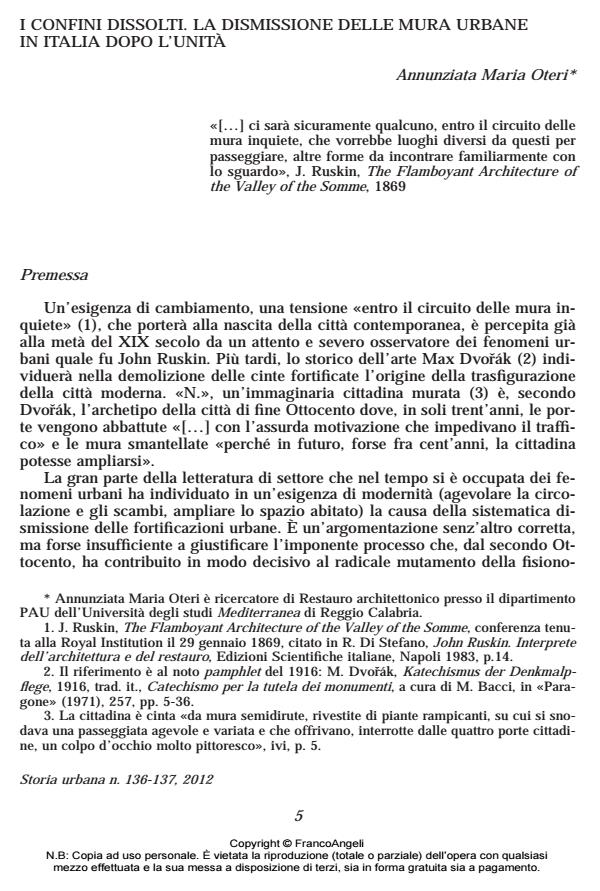Broken boundaries. Defortification of urban walls after the Unification of Italy
Journal title STORIA URBANA
Author/s Annunziata Maria Oteri
Publishing Year 2013 Issue 2012/136
Language Italian Pages 23 P. 5-27 File size 491 KB
DOI 10.3280/SU2012-136001
DOI is like a bar code for intellectual property: to have more infomation
click here
Below, you can see the article first page
If you want to buy this article in PDF format, you can do it, following the instructions to buy download credits

FrancoAngeli is member of Publishers International Linking Association, Inc (PILA), a not-for-profit association which run the CrossRef service enabling links to and from online scholarly content.
A vague need for modernity is generally considered the first cause of defortification of urban walls in Italy. This analyses, undoubtedly correct, is perhaps insufficient to justify the important phenomenon which, from the second half of the 19th century to modern times, has decidedly helped in the radical transformations in appearance of many large, medium and also small European cities. The essay presents the contents of this volume which deals with defortification of urban fortifications after the Unification of Italy. From the analyses of some significant examples (Milan, Brescia, Rome, Naples, Crotone and Messina) and without the pretension of giving an exhaustive picture of the phenomenon, the studies here gathered, do not explore the concrete effects of this process on the cities, which are commonly known. On the contrary, by considering the specificity of each case, they dig into economic, social and cultural reasons of divestment. Destruction of urban walls and fortresses is here considered the starting point of that radical transformation of modern cities which Alberto Caracciolo has well defined as the passage from "traditional to capitalistic city". For this reason, these studies only focus on urban walls, fortresses and citadels, excluding other military settlements (barracks, riding schools, hospitals, colleges, workshops), where divestment followed different procedures. Apart from some significant exceptions, the essays focus in particular on the postunification period when, on the one hand, radical changes in defensive systems reduced the role of the army within the city and, on the other, important urban and territorial changes hastened the already initiated processes of divestment.
Keywords: Urban Walls Defortification Urban Transformations Demolition
Annunziata Maria Oteri, I confini dissolti. la dismissione delle mura urbane in Italia dopo l’unità in "STORIA URBANA " 136/2012, pp 5-27, DOI: 10.3280/SU2012-136001